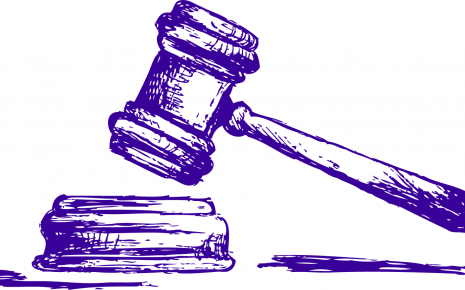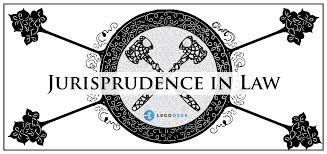Mercy Petition vs Death Penalty
In the temple of justice, a lady cries
Help me out, Satan killed my child
O, Lord! Why such hardships?
Hang this man, ordered your Lordship.
Shrewd Satan supplicates the King
You have my Mercy, don't you worry my child.
Mercy petition has been one of the most debated and stressed topics in the arena
of law and justice at domestic and international levels. Be it the House of
Commons or a convention of the United Nations Human Rights Commission, the
discussions on the said topic are never-ending. This article would be dealing
with the Indian point of view covering all the relevant points at both domestic
and international levels in an attempt to bring light to the unilluminated
brains of the State. At a time when most of the countries have already abolished
the death penalty or are under a moratorium, India is on the verge of seeking
reform on Mercy petition as well as capital punishment.
Mercy petition and
Capital punishment cohabitate each other or it can be said that the need for
knocking the doors of the President arises only after the convict has been
sentenced to the death penalty. Although we have celebrated 73rd independence
day recently, still there are a plethora of hurdles in the path of the correct
applicability of mercy petition and capital punishment . The decades' long delay
and inefficiency in deciding the clemency cases seem to be the most lamenting
part of the executive. The debilitating effects of this complex phenomenon
imposed upon the prisoners that can be only called a living death are far beyond
the maximum suffering permitted by Article 21[1]. As per the data revealed by
the 262nd report of the Law Commission, 140 countries have already abolished the
death penalty. Still, some intellectuals are defending the retributive theory of
punishment and forgetting the words of Gandhiji, an eye for an eye makes world
blind . I sincerely hope that this article would contribute to a more rational,
principled and informed debate on the constitutionality of Article 72 and 161 of
the constitution of India and the abolition of the death penalty.
Historical background:
In India, the clemency powers are given to the President of India as well as the
Governor of the states through Article 72 and 161 of the Constitution of India
1950 respectively. The said article authorizes the executive to grant Pardon,
commute, suspend, reprieve, respite and to remit the capital punishment even if
sentenced by the highest court of the land. The brainchild behind the insertion
of article 62 is bonafide in nature which gives a death row convict a chance to
cross-check any errors committed by the Supreme Court. The data, however, is not
so happening, the MHA's data show that Presidents, with the exceptions of Mr.
Rajendra Prasad and Smt. Pratibha Patil has dealt with mercy petitions largely
without mercy.
According to information released by the government under the RTI
Act, of the 77 mercy pleas decided by Presidents between 1991 and 2010, 69 were
rejected. Only 8 — about 10% — of those who sought mercy were spared the
gallows. R Venkataraman (1987-1992) rejected 44 mercy pleas, the most by any
President. [2]
The current President Mr. Ram Nath Kovind had recently rejected a mercy
petition, his first, moved by Jagat Rai of Bihar who has been sentenced to death
for killing six members of a family over a buffalo theft. Since India became
republic till 1982, a period that saw six Presidents, only one mercy petition
was rejected. During 1982-97, three Presidents rejected 93 mercy petitions and
commuted seven sentences. Unfortunately, no pleas were decided during the tenure
of President K R Narayanan (1997-2002), after which A P J Abdul Kalam
(2002-2007) decided on two pleas, rejecting one and granting the other out of
total 24 petitions.
The most commendable work was shown by Smt. Pratibha Patil,
the first woman President of India (2007-2012) commuted 34 mercy pleas and
rejected only five. After her, the Finance Minister turned President Pranab
Mukherjee (2012-17), on the other hand, rejected 31 of the 33 mercy pleas he
decided. The president does not decide on the clemency cases on his own.
He is
advised by the council of ministers under article 74 and 163 even though he is
not bound to act on their suggestions. The interference of the legislature with
the executive on deciding clemency cases as per their whims and fancies is a
very expected thing in a country where the post of the President is de jure and
not de facto. It is fundamental to the Westminster system that the Cabinet rules
and the Queen reigns being too deeply rooted as foundational to our system no
serious encounter was met from the learned Solicitor-General whose sure grasp of
fundamentals did not permit him to controvert the proposition, that the
President and the Governor, be they ever so high in textual terminology, are but
functional euphemisms promptly acting on and only on the advice of the Council
of Ministers having a narrow area of power.
Although there have been exceptional cases like Rajendra Prasad and Mrs. Patil,
the Presidents have dealt mercy petitions without mercy. The President is not
bound by any time limit to decide on the mercy petition which is why there have
been cases of inefficiency and procrastination. Dr. A.P.J. Abdul Kalam at the
end of five year's term had left behind over two dozen cases, having decided
only two. The following table shows the record of mercy petitions disclosed by
the Presidents to date.
| S.No. | Name of the President | Tenure | No. of mercy petitions accepted | No. of mercy petitions rejected | Total |
| 1. | Rajendra Prasad | 26/01/1950 - 03/05/1962 | 180 | 1 | 181 |
| 2. | Sarvapalli Radhakrishnan | 13/05/1962 - 13/05/1967 | 57 | 0 | 57 |
| 3. | Zakir Hussain | 13/05/1967 - 03/05/1969 | 22 | 0 | 22 |
| 4. | V.V. Giri | 03/05/1969 - 20/07/1969 24.8.1969 – 24.8.1974 |
3 | 0 | 3 |
| 5. | Fakhruddin Ali Ahmed | 24.8.1974 – 11.2.1977 | N.A | NA | 0 |
| 6. | N.Sanjeeva Reddy | 25.7.1977 – 5.7.1982 | NA | NA | 0 |
| 7. | Zail Singh | 25.7.1982 – 25.7.1987 | 2 | 30 | 328 |
| 8. | R.Venkataraman | 25.7.1987 – 25.7.1992 | 5 | 45 | 50 |
| 9. | S.D. Sharma | 25.7.1987 – 25.7.1992 | 0 | 18 | 18 |
| 10. | K.R. Narayana | 25.7.1997 – 25.7.2002 | 0 | 0 | 0 |
| 11. | A.P.J Kalam | 25.7.2002 25.7.2007 | 1 | 1 | 2 |
| 12. | Pratibha Patil | 25.7.2007 – 25.7.2012 | 34 | 5 | 39 |
| 13. | Pranab Mukherjee | 25.7.2012 - 25.7.2017 | 4 | 31 | 35 |
| 14. | Ram Nath Kovind` | 25.7.2017- | 0 | 1 | 1 |
| Total | 308 | 132 | 440 |
As you can see that out of the 440 cases, 308 cases have been accepted which
means that the sentencing done by the apex court had been overturned. But it is
important to note that just because the imposition of the death penalty in such
a large number of cases has been overruled, does not mean ‘that the system is
functioning well. In most of the cases, both the lower courts have been in
error. Such errors have been corrected only after a long duration in prison,
including extended periods on death row. This trauma of being under a sentence
of death faced by the convicts is called the death row phenomenon which exacts
its own mental and physical punishment, even if the person is subsequently
spared from gallows.[4]
Solution in abolition:
An early attempt at the abolition of the death penalty took place in
pre-independent India when Shri Gaya Prasad Singh attempted to introduce a bill
abolishing the death penalty for IPC offenses in 1931. However, this was
defeated.[5] Around the same time, in March 1931, following the execution of
Bhagat Singh, Sukhdev and Rajguru by the British government, the Congress moved
a resolution in its Karachi session, which included a demand for the abolition
of the death penalty[6] India's Constituent Assembly Debates between 1947 and
1949 also raised questions around the judge centric nature of the death
penalty, arbitrariness in imposition, its discriminatory impact on the people
living in poverty and the possibility of error.[7]
The 35th law commission
report had recommended the capital punishment should be retained in the present
state of the country .[8] Having considered the conditions in India, to the
variety of the social upbringing of its inhabitants, to the disparity in the
level of morality and education in the country, to the vastness of its area, to
the diversity of its population and to the paramount need for maintaining law
and order in the country at the then-prevailing juncture.
The time has changed now India has seen tremendous growth in educational,
financial and social sectors. In 1967, when the 35th Report was presented, only
12 countries had abolished capital punishment for all crimes in all
circumstances.[9] Today, 140 countries have abolished the death penalty in law
or practice. Further, the number of countries that have remained active
retentionists, namely they have executed at least one person in the last ten
years, has fallen from 51 in 2007 to 39 (as of April 2014).[10] Dr. Ambedkar was
personally in favor of the abolition of the death penalty. He opined to
eliminate the death penalty instead of having a provision of appellate power to
appeal in cases of capital punishment.
The death penalty should be abolished as
it violates Article 14, 19 and 21 of the constitution of India. Since the death
sentences extinguish, along with life, all the freedoms guaranteed under Article
19 (1) (a) to (g). it was an unreasonable denial of freedom and not in the
interests of the public. Also, the judge centric sentencing or the discretion
vested on judges in deciding the imposition of the death penalty is uncontrolled
and unguided and thus violates Article 14. Finally, the lack of procedure in
deciding the circumstances crucial for choosing between life imprisonment and
capital punishment violates Article 21.
Justice P.N. Bhagwati in his dissenting opinion found that the death penalty
necessarily arbitrary, discriminatory and capricious. He reasoned that the
death penalty in its actual operation is discriminatory, for it strikes against
the poor and deprived sections of the community and the rich and affluent
usually escape, from its clutches.[11] Article 6(2) of International covenant of
civil and political rights (ICCPR) to which most of the countries are
signatories including India, states that the sentence of death may be imposed
only for the most serious crimes in accordance with the law in force at the time
of the commission of the crime and not contrary to the provisions of the present
Covenant.[12]. In India, on the other hand, the death penalty is awarded for
less grievous crimes resulting in no compliance with the Article 51(C) of the
Indian Constitution which says that the state shall endeavor to foster
international law and treaty obligations in the dealings of organized people
with one another.[13]
Conclusions and Recommendations:
# The executive's mercy powers cure defects of arbitrary and erroneous death
sentences and provide an additional bulwark against miscarriages of justice.
Therefore, cases found unfit for mercy merit capital punishment. Mercy powers
are thus a safeguard and necessary precondition for the death penalty.
# The exercise of mercy powers under Article 72 and 161 have failed in acting as
the final safeguard against the miscarriage of justice in the imposition of the
death sentence. The Supreme Court has repeatedly pointed out gaps and
illegalities in how the executive has discharged its mercy powers. When even
exercise of mercy powers is sometimes vitiated by gross procedural violations
and non-application of mind, capital punishment becomes indefensible.
# The death penalty does not serve the penological goal of deterrence any more
than life imprisonment.
# Retribution has an important role to play in punishment. However, it cannot be
reduced to vengeance. The notion of an eye for an eye, tooth for a tooth has
no place in our constitutionally mediated criminal justice system.
# It is strongly recommended that the death penalty be abolished for all crimes
other than terrorism-related offenses and waging war.
# I sincerely hope that the movement towards the abolition of the death penalty
will be swift and irreversible.
End-Notes
[1] 2015, Death Penalty, 262nd report of law commission of India,
[2] https://indianexpress.com/article/explained/how-the-president (Web view)
[3] This table is based on archival research and RTI data published on the
262nd law commission report.
[4] See Brandon L. Garrett, The Banality of Wrongful Executions, MICH. L. REV.
(2014).
[5] Law Commission of India, 35th Report, 1967, at para 12, available at http://lawcommissionofindia.nic.in/1-50/Report35Vol1and3.pdf
[6] Special Correspondent, It’s time death penalty is abolished: Aiyar, The
Hindu, 7 August 2015, available at http://www.thehindu.com/news/national/its-time-deathpenalty-is-abolished-aiyar/article7509444.ece
[7] See Constituent Assembly Debates on 3 June, 1949, Part II available
at http://parliamentofindia.nic.in/ls/debates/vol8p15b.htm
[8] Law Commission of India, 35th Report, 1967, at para 1
[9] Supra8
[10] Roger Hood and Carolyn Hoyle, THE DEATH PENALTY: A WORLDWIDE PERSPECTIVE 5
(5th ed. 2015).
[11] Bachan Singh v. State of Punjab, 1982 3 SCC 24 (J. Bhagwati, dissenting),
at para 81.
[12] Article 6 (2), Second Optional Protocol to the ICCPR, aiming at the
abolition of the death penalty
[13] Article 51(c) of Constitution of India.
Law Article in India
Legal Question & Answers
Lawyers in India - Search By City
LawArticles
How To File For Mutual Divorce In Delhi

How To File For Mutual Divorce In Delhi Mutual Consent Divorce is the Simplest Way to Obtain a D...
Increased Age For Girls Marriage

It is hoped that the Prohibition of Child Marriage (Amendment) Bill, 2021, which intends to inc...
Facade of Social Media

One may very easily get absorbed in the lives of others as one scrolls through a Facebook news ...
Section 482 CrPc - Quashing Of FIR: Guid...

The Inherent power under Section 482 in The Code Of Criminal Procedure, 1973 (37th Chapter of t...
The Uniform Civil Code (UCC) in India: A...

The Uniform Civil Code (UCC) is a concept that proposes the unification of personal laws across...
Role Of Artificial Intelligence In Legal...

Artificial intelligence (AI) is revolutionizing various sectors of the economy, and the legal i...








Please Drop Your Comments